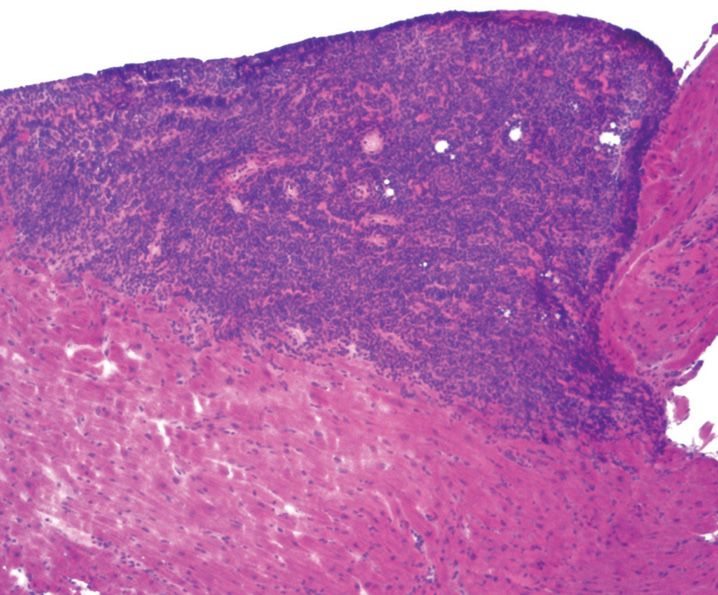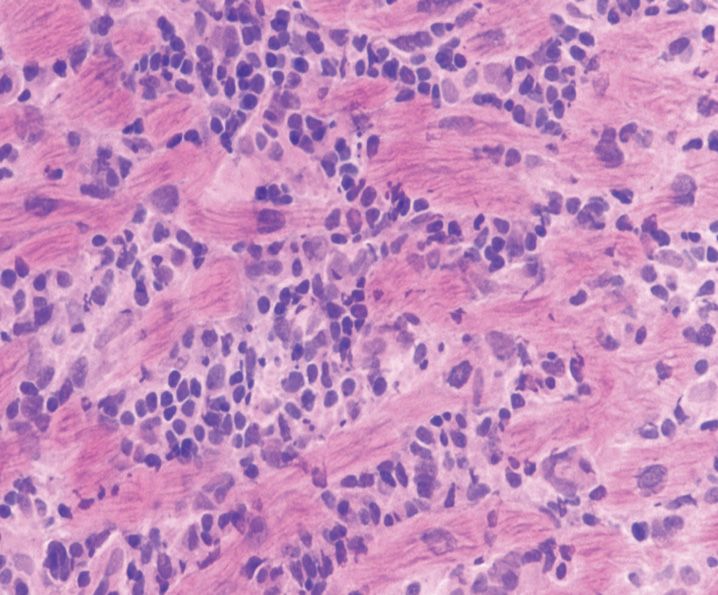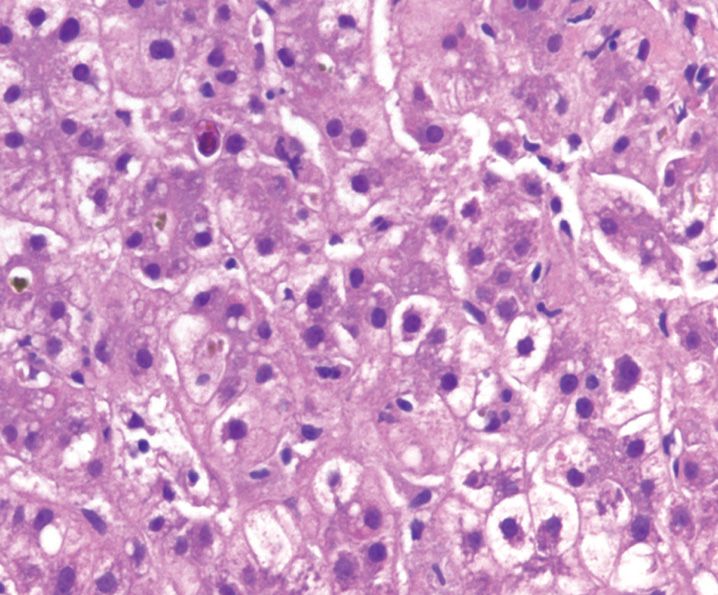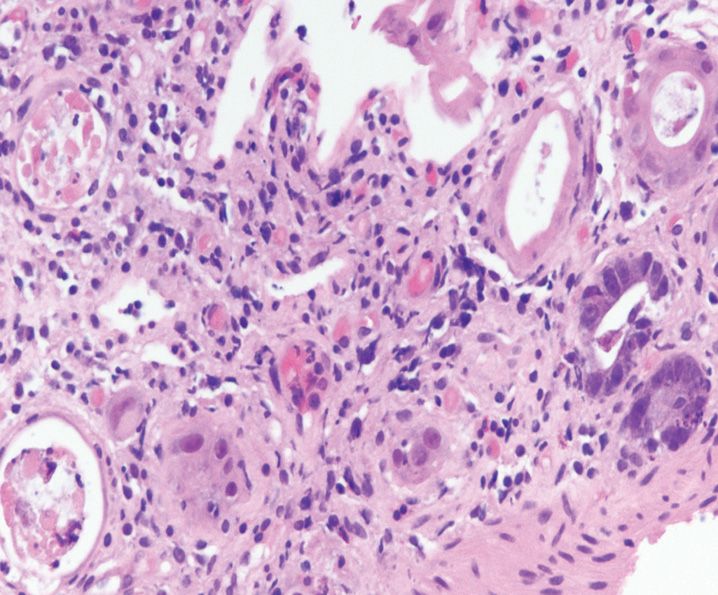FIGURE 23-1
(A) Interstitial fibrosis
(B) Ischemic and transplant glomerulopathy
(C) Parenchymal hemorrhage
(D) Tubular atrophy
(E) Tubular microcalcifications
6. A 52-year-old man undergoes cardiac transplantation for end-stage congestive cardiac failure. The findings in this endomyocardial biopsy (see Figure 23-2) are associated with all of the following, except
(A) Acute cellular rejection
(B) Endocardial or myocardial infiltrates
(C) Predominantly CD4+ T-lymphocytic infiltrate
(D) Prolonged cyclosporine use
(E) Vascular proliferation and stromal fibrosis
7. A posttransplantation cardiac biopsy obtained from a 56-year-old woman is depicted in Figure 23-3. The histologic features are consistent with
(A) Acute cellular rejection
(B) Antibody-mediated rejection
(C) Chronic rejection
(D) Hyperacute rejection
(E) Quilty effect
8. Post-transplant recurrent hepatitis C is characterized by all of the following features, except
(A) Focal bile duct damage
(B) Hepatitis C viral titer of 69000000 IU/mL
(C) Macrovesicular steatosis
(D) Numerous acidophil bodies
(E) Portal inflammation with activated lymphocytes
9. A 47-year-old man with a history of liver transplantation for Hepatitis C-induced cirrhosis presents to the emergency room with severe jaundice and altered sensorium. He is found to have a viral load of 47000000 IU/mL, prolonged prothrombin time, and a moderate increase in serum transaminases. Based on his post-transplant liver biopsy findings (see Figure 23-4), the most likely diagnosis is
(A) Bile duct obstruction
(B) Drug toxicity
(C) Fibrosing cholestatic hepatitis
(D) Ischemic cholangiopathy
(E) Severe acute cellular rejection
10. In a transbronchial biopsy sample, which of the following features is least diagnostic of acute cellular rejection?
(A) Endotheliitis
(B) Hyaline membranes
(C) Intra-alveolar macrophages with brown/black material
(D) Lymphocytic bronchiolitis
(E) Perivascular mononuclear inflammation
11. A 43-year-old man, who is 6 months post-simultaneous pancreas-kidney transplant for type I diabetes mellitus, presents with abdominal pain and increased serum lipase level. He has been non-compliant with his medications and is clinically suspected to have acute rejection. His pancreas biopsy is least likely to show
(A) Acinar damage
(B) Arteritis
(C) Islet cell injury
(D) Lobular septal inflammation
(E) Venous endotheliitis
12. In a small-bowel allograft biopsy obtained 5 months following transplantation that shows minimal villous blunting and expansion of the lamina propria by activated lymphocytes, the number of apoptotic figures per 10 consecutive crypts that is indicative of mild acute cellular rejection is
(A) 2
(B) 3
(C) 4
(D) 5
(E) 6
13. A 20-year-old patient undergoes bone marrow transplantation and presents with severe diarrhea. Based on the findings in his colon biopsy is shown in Figure 23-5, the most likely diagnosis is
(A) Cytomegalovirus colitis
(B) Drug-induced colitis
(C) Mild graft-versus-host disease
(D) Moderate graft-versus-host-disease
(E) Severe graft-versus-host-disease
14. In the appropriate clinical setting, all the following histologic findings are seen in cutaneous graft-versus-host disease, except
(A) Apoptosis in the superficial keratinocytes
(B) Epidermal compact orthokeratosis, hypergranulosis, and acanthosis with lichenoid changes
(C) Fibrous thickening of the fascia with inflammation
(D) Lymphocyte satellitosis
(E) Sclerosis of papillary or reticular dermis
15. In a patient with bone marrow transplantation, which of the following endoscopic findings in esophagus is diagnostic of chronic graft-versus-host disease?
(A) Hiatal hernia
(B) Irregular Z-line
(C) Ulcers
Stay updated, free articles. Join our Telegram channel

Full access? Get Clinical Tree






